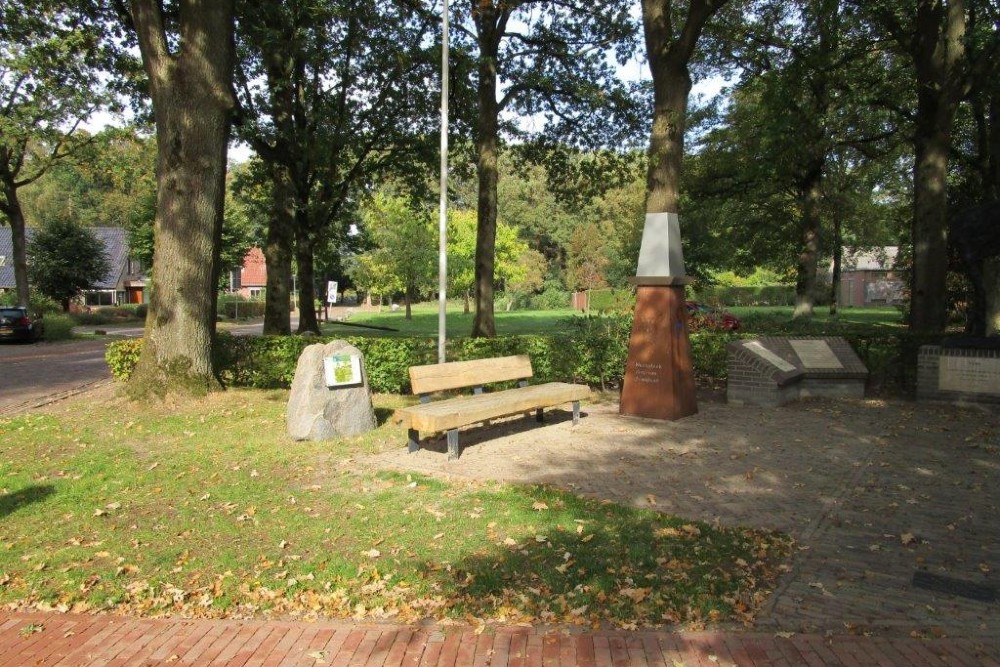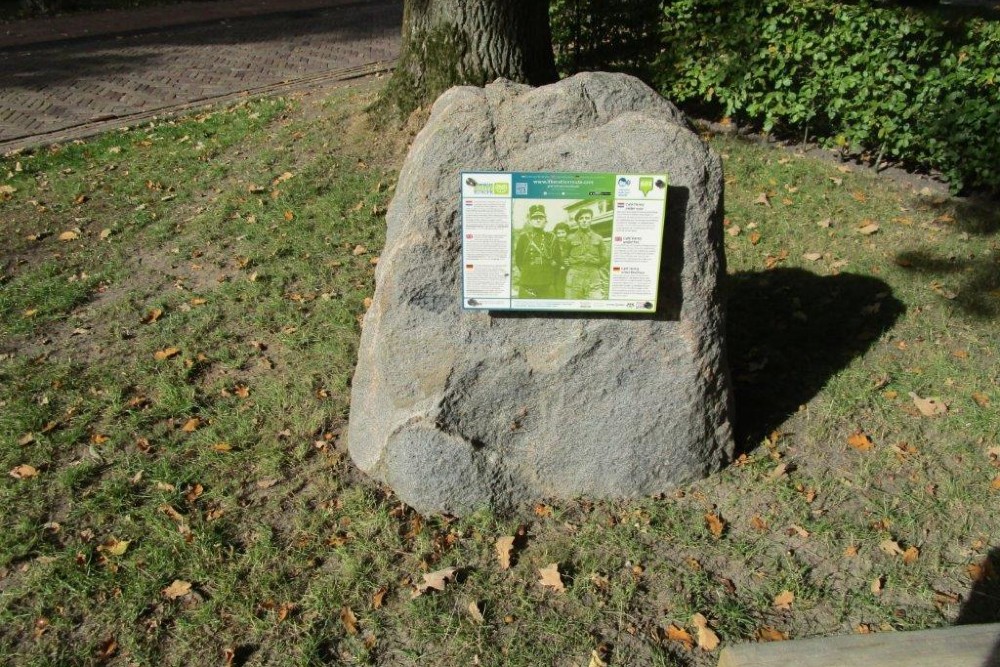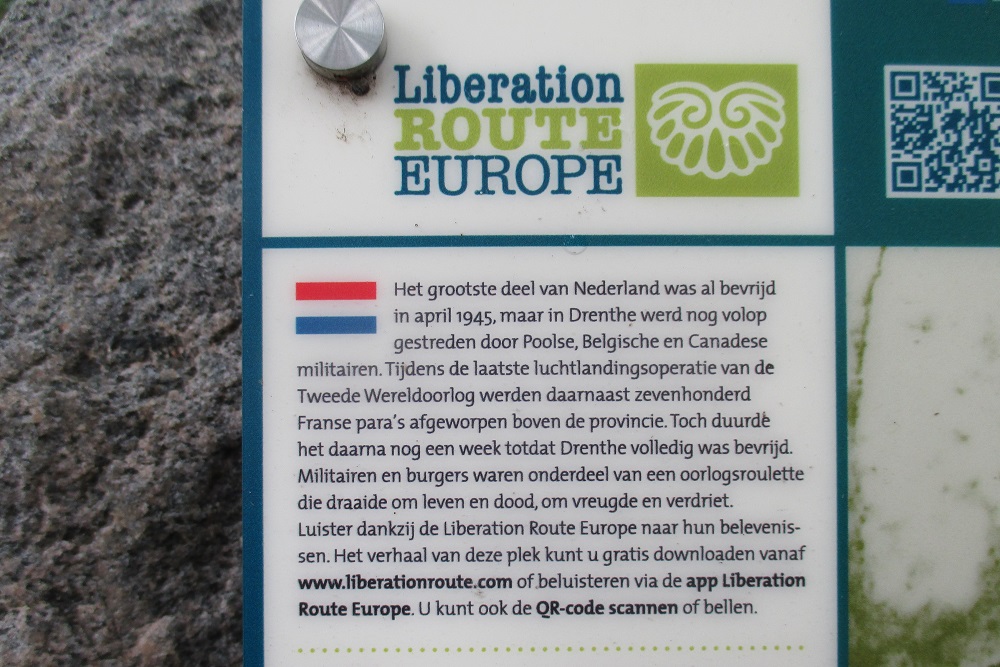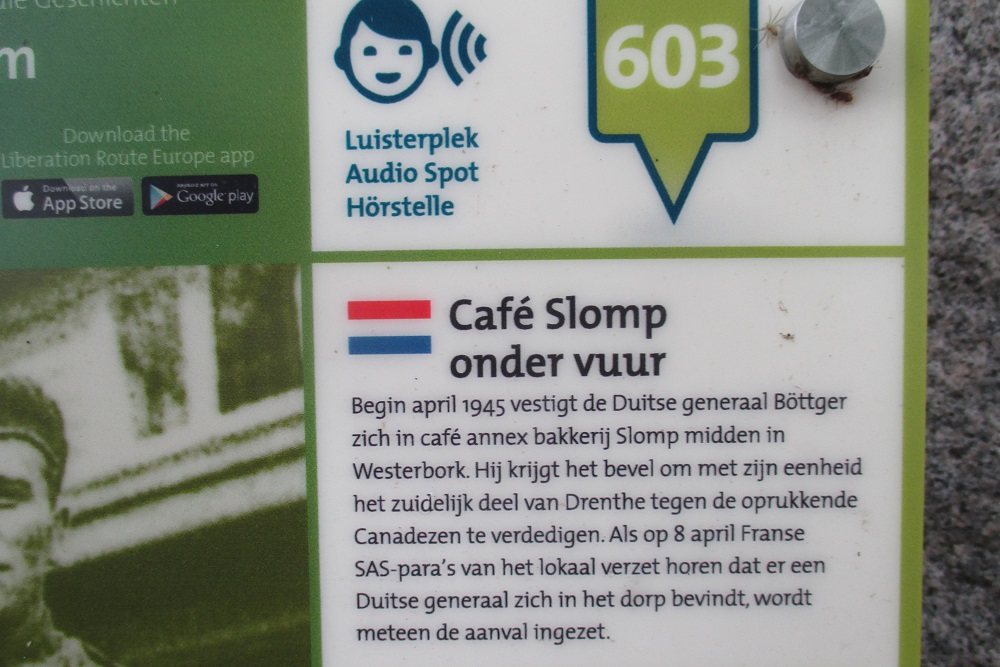Liberation Route Marker 603: Café Slomp under fire
Café Slomp under fire
In October 1940, General De Gaulle decides to start a parachute regiment: 1st Compagnie d’infanterie de l’air. The soldiers receive their training in England, after which they jump into France as agents and carry out operations against the German Africa Corps in Libya, Egypt, and Italy. Soon they become part of the British SAS and the French squadron participates in all missions.
In the years that follow, all kinds of people join the 2nd and 3rd Regiment de Chasseurs Parachutisten. Veterans from Libya, De Gaulle supporters, refugees from France, and volunteers from all over the world receive intensive training in England or Scotland to be deployed at any time. Their task is to obstruct or disrupt the German occupiers as much as possible, which they successfully do in Normandy, Burgundy, at the Battle of the Bulge, and ultimately in the Netherlands.
In the night of 7/8 April 1945, the two French regiments are dropped with about 700 people above Drenthe and Southeast Friesland. Operation Amherst has started. They must conquer bridges, secure airports, stimulate local resistance, and cause as much confusion as possible. Bad weather hugely influences the drops and once on the ground, the French paratroopers have to improvise. They quickly seek contact with the locals in order to find their bearings. Major Puech-Samson and Captain Betbèze are in luck when they meet Mr Van Lohuizen, director of the KNMI’s geomagnetic station in Witteveen, who speaks French.
Audiospot - Café Slomp under fire
Liberation Route Europe is a certified Cultural Route of the Council of Europe. With hundreds of sites and stories in nine European countries, the route links the main regions along the advance of the Allied Forces in 1943-1945.
The entire route consists of themed routes that can be travelled by by hiking, walking, cycling and car. These routes pass numerous historical and interesting sites and tell stories from a multitude of perspectives that were important in the final phase of World War II.
Many routes feature listening spots, offering the opportunity to listen to a historical story at a location. In addition, many ‘Vectors of Memory’ have been placed, indicating that the passer-by is on one of the Liberation Routes.
The routes can be found on the Liberation Route Europe website or in the app through which many stories can also be listened to.
Do you have more information about this location? Inform us!
Source
- Text: TracesOfWar & Liberation Route Europe
- Photos: Arie van Wijngaarden (1, 2), Dick de Bruijne (3), Nico Nienhuis (4, 5)
Nearby
Museum
Point of interest
Monument
- War Memorial Westerbork 'Westerbork: Dorp van de Vrijheid' - Westerbork
- Dutch-Indies Memorial Municipal Cemetery Westerbork - Westerbork
- Monument Ltn. George Taylor - Orvelte
Cemetery
- Commonwealth War Graves Municipal Cemetery Westerbork - Westerbork
- Jewish War Graves Municipal Cemetery Westerbork - Westerbork
- Dutch War Graves Westerbork General Cemetery - Westerbork







